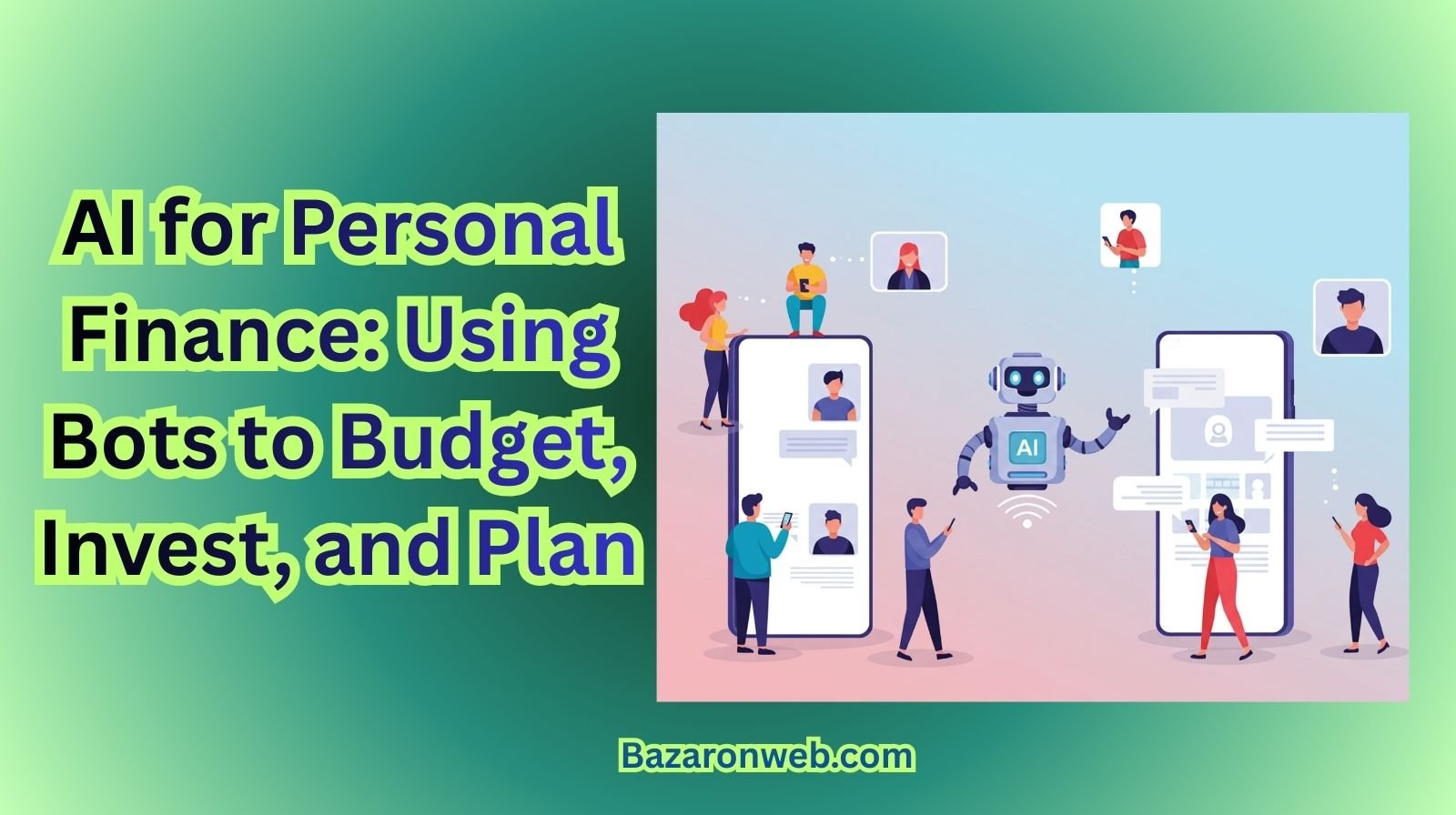Category
Popular Articles
- AI (9)
- Android (35)
- App Suggest (4)
- Apple (5)
- Apple TV (2)
- Bluetooth (2)
- Cars (2)
- ChatGpt (1)
- Did you know? (1)
- E-Commerce News (1)
- Ecommerce Websites business (7)
- Electronics Shopping (5)
- Fashion Tips (3)
- Gaming (3)
- Google Gemini (3)
- Hair Care Tips (2)
- How to (13)
- iCloud (1)
- Infotainment System (1)
- Iphone (93)
- Job Posting (1)
- Mac (18)
- Mobile Games (1)
- Netflix (1)
- Online Shopping Websites (2)
- Product Reviews (3)
- Roku TV (4)
- Samsung (7)
- Shopping Tips (10)
- Tech (58)
- Windows 11 (4)
Discounted Products
-
 Leo Creation 144 TC Cotton Double Jaipuri Prints Flat Bedsheet(Pack of 1, Blue, Gree, Red, Grey, Light Grey)
Leo Creation 144 TC Cotton Double Jaipuri Prints Flat Bedsheet(Pack of 1, Blue, Gree, Red, Grey, Light Grey)
₹2,999.00Original price was: ₹2,999.00.₹329.00Current price is: ₹329.00. -
 Home Garage 210 TC Cotton King Floral Fitted (Elastic) Bedsheet(Pack of 1, Grey)
Home Garage 210 TC Cotton King Floral Fitted (Elastic) Bedsheet(Pack of 1, Grey)
₹999.00Original price was: ₹999.00.₹299.00Current price is: ₹299.00. -
 Goodrik 140 TC Cotton Double 3D Printed Flat Bedsheet(Pack of 1, Brown)
Goodrik 140 TC Cotton Double 3D Printed Flat Bedsheet(Pack of 1, Brown)
₹499.00Original price was: ₹499.00.₹229.00Current price is: ₹229.00. -
 GLOBALSHOP 350 TC Microfiber Double Floral Flat Bedsheet(Pack of 1, Multicolor)
GLOBALSHOP 350 TC Microfiber Double Floral Flat Bedsheet(Pack of 1, Multicolor)
₹1,250.00Original price was: ₹1,250.00.₹263.00Current price is: ₹263.00. -
 RisingStar 250 TC Microfiber King Printed Fitted (Elastic) Bedsheet(Pack of 1, FITTED-ROUND-CIRCLES-PREMIUM)
RisingStar 250 TC Microfiber King Printed Fitted (Elastic) Bedsheet(Pack of 1, FITTED-ROUND-CIRCLES-PREMIUM)
₹2,299.00Original price was: ₹2,299.00.₹299.00Current price is: ₹299.00. -
 Home Garage 210 TC Cotton King Floral Fitted (Elastic) Bedsheet(Pack of 1, Fitted Black Green)
Home Garage 210 TC Cotton King Floral Fitted (Elastic) Bedsheet(Pack of 1, Fitted Black Green)
₹1,299.00Original price was: ₹1,299.00.₹299.00Current price is: ₹299.00. -
 Home Garage 180 TC Cotton King 3D Printed Flat Bedsheet(Pack of 1, White)
Home Garage 180 TC Cotton King 3D Printed Flat Bedsheet(Pack of 1, White)
₹999.00Original price was: ₹999.00.₹229.00Current price is: ₹229.00. -
 Home Sizzler 153 cm (5 ft) Polyester Room Darkening Window Curtain (Pack Of 2)(Floral, Maroon)
Home Sizzler 153 cm (5 ft) Polyester Room Darkening Window Curtain (Pack Of 2)(Floral, Maroon)
₹799.00Original price was: ₹799.00.₹299.00Current price is: ₹299.00. -
 Panipat Textile Hub 152.4 cm (5 ft) Polyester Window Curtain (Pack Of 2)(Solid, Aqua)
Panipat Textile Hub 152.4 cm (5 ft) Polyester Window Curtain (Pack Of 2)(Solid, Aqua)
₹1,899.00Original price was: ₹1,899.00.₹299.00Current price is: ₹299.00. -
 Home Sizzler 214 cm (7 ft) Polyester Semi Transparent Door Curtain (Pack Of 2)(Floral, Maroon)
Home Sizzler 214 cm (7 ft) Polyester Semi Transparent Door Curtain (Pack Of 2)(Floral, Maroon)
₹1,199.00Original price was: ₹1,199.00.₹399.00Current price is: ₹399.00. -
 Home Sizzler 153 cm (5 ft) Polyester Room Darkening Window Curtain (Pack Of 2)(Floral, Brown)
Home Sizzler 153 cm (5 ft) Polyester Room Darkening Window Curtain (Pack Of 2)(Floral, Brown)
₹799.00Original price was: ₹799.00.₹299.00Current price is: ₹299.00. -
 Stella Creations 214 cm (7 ft) Polyester Room Darkening Door Curtain (Pack Of 2)(Abstract, Brown)
Stella Creations 214 cm (7 ft) Polyester Room Darkening Door Curtain (Pack Of 2)(Abstract, Brown)
₹1,299.00Original price was: ₹1,299.00.₹449.00Current price is: ₹449.00. -
 Homefab India 152.5 cm (5 ft) Polyester Room Darkening Window Curtain (Pack Of 2)(Floral, Light Blue)
Homefab India 152.5 cm (5 ft) Polyester Room Darkening Window Curtain (Pack Of 2)(Floral, Light Blue)
₹1,199.00Original price was: ₹1,199.00.₹319.00Current price is: ₹319.00. -
 Urban Home 214 cm (7 ft) PVC Transparent Door Curtain Single Curtain(Solid, Off White)
Urban Home 214 cm (7 ft) PVC Transparent Door Curtain Single Curtain(Solid, Off White)
₹699.00Original price was: ₹699.00.₹203.00Current price is: ₹203.00. -
 Panipat Textile Hub 213 cm (7 ft) Polyester Door Curtain (Pack Of 2)(Solid, Brown)
Panipat Textile Hub 213 cm (7 ft) Polyester Door Curtain (Pack Of 2)(Solid, Brown)
₹1,199.00Original price was: ₹1,199.00.₹349.00Current price is: ₹349.00.
Affiliate Links
Promotion

By Jessica
Understanding How AI Is Transforming Personal Finance
Managing personal finances used to be a complicated mix of spreadsheets, budgeting notebooks, banking alerts, and scattered financial apps. Today, Artificial Intelligence has completely shifted that landscape. Whether you’re trying to build a smarter monthly budget, learn how to invest, eliminate debt, or plan long-term financial goals, AI-powered tools are emerging as personal finance companions that work around the clock.
As someone who works closely with technology trends, I’ve seen how AI is quietly reshaping how Americans think about money. It’s not just about automation—it’s about clarity, confidence, and real-time insights that were once available only to professionals. AI is democratising financial knowledge in a way that empowers everyday users to make smarter decisions without needing a financial background.
In this first section, let’s explore what AI is doing in the world of personal finance and why it has become one of the most valuable tools for budgeting, investing, and financial planning.
Why AI Matters in Personal Finance Today
The modern financial world is full of complexity—variable income sources, rising living costs, subscription overload, changing interest rates, and an overwhelming number of investment options. In this environment, most people aren’t just looking for tools; they’re looking for guidance. They want something that can not only track money but interpret patterns and offer proactive recommendations.
This is where AI stands out. Unlike traditional budgeting apps that wait for you to input information manually, AI-powered tools learn from your behavior. They can:
- Categorize expenses automatically
- Predict upcoming bills
- Identify wasteful spending
- Track rising or falling financial trends
- Suggest spending adjustments
- Provide insights based on your habits
- Forecast savings or investment outcomes
In other words, AI doesn’t just show you your money—it helps you understand it.
This level of personalized analysis used to require a financial advisor. Today, AI brings it directly to your smartphone, making financial literacy accessible to everyone.
How AI Budgeting Tools Work Behind the Scenes
Modern budgeting bots work by connecting directly to your bank accounts, credit cards, and e-wallets. Once connected, AI starts analyzing your transactions to detect patterns. For example:
- It recognizes your rent or mortgage bill as a fixed monthly expense
- It detects variable categories like groceries, transportation, and entertainment
- It identifies recurring subscriptions
- It calculates average weekly spending
- It flags unusual transactions
Instead of requiring you to classify everything manually, AI does the heavy lifting and organizes your digital financial life into understandable categories. It can then generate a personalized dashboard showing:
- Monthly spending breakdown
- Spending trends over time
- Category comparisons
- Estimated savings
- Upcoming financial risks
- Cash-flow predictions
The key advantage here is proactive guidance. AI doesn’t wait for you to overspend—it predicts it and warns you early.
AI as a Personal Financial Coach
What makes AI different from a standard budgeting app is its ability to act as a mini financial coach. It can send you intelligent nudges like:
- “Your dining-out expenses are projected to exceed your usual budget this month.”
- “You spent less on transportation this week—consider moving the extra amount into savings.”
- “Your streaming subscriptions have increased by $18 this month—would you like help reviewing them?”
- “Your next credit card bill is trending higher than last month.”
These tailored prompts encourage healthier financial habits without the shame-based language that some traditional financial systems rely on.
And because AI tools are available 24/7, they provide real-time support, unlike human advisors who typically require appointments or consultations.
AI for Savings Goals: Personalized, Predictive, and Strategic
Savings often feels abstract because it requires discipline over time. AI helps bridge that gap through goal-based planning.
AI savings tools can:
- Calculate the exact amount you need to save each month
- Analyze your historical spending to recommend realistic goals
- Automate transfers to savings accounts at optimal times
- Predict when you might fall short
- Offer strategies to compensate for unexpected expenses
Say you want to save for a summer vacation, home renovation, a new laptop, or an emergency fund. AI evaluates:
- Your income patterns
- Your variable and fixed expenses
- Your discretionary spending
- Seasonal trends in your financial habits
Then, it builds a personalized savings plan that adjusts dynamically. If you overspend in one area one month, AI recalibrates your goal so you stay on track.
This flexible, adaptive approach makes saving less stressful and far more achievable.
AI and Subscription Management
One of the quietest financial drains today is subscription fatigue. Americans often lose track of:
- Streaming services
- Fitness apps
- Food-delivery memberships
- Cloud storage
- Premium app upgrades
- Magazine and news subscriptions
AI can audit all recurring payments, notify you of increases, and recommend cancellations based on inactivity. It brings clarity to a part of budgeting that many people overlook until it becomes expensive.
AI Brings Financial Awareness to Everyday Consumers
What sets AI apart is not the ability to analyze numbers—it’s the ability to translate financial data into insights. It helps people understand:
- Why they overspend
- Where their money goes
- How they can save more
- Which habits are costing them the most
- How small adjustments can lead to meaningful financial improvement
This awareness is the first step toward long-term financial stability.
AI for Investing, Wealth Building & Risk Management
Artificial intelligence is reshaping personal investing in a way that’s accessible, data-driven, and refreshingly stress-free. In the past, building an investment strategy meant either doing hours of research or hiring an expensive financial advisor. But today, AI-powered tools can analyze markets in seconds, optimize portfolio decisions, and help everyday Americans invest with the same confidence once reserved for professionals.
As someone who loves efficiency and practical tech solutions, I’ve been following how AI-driven investing tools are evolving—and what they can realistically do for individuals trying to grow their wealth. In Part 2 of this guide, let’s walk through how AI enhances investing, what it can and cannot do, and how to use these tools responsibly while maintaining long-term financial stability.
AI Isn’t Just Automating Investing—it’s Personalizing It
One of the biggest advantages of AI-driven investing is personalization. Traditional investment plans often follow broad templates: your age, your risk tolerance, and a generic model portfolio. But AI tools can go deeper by identifying behavior patterns and adjusting recommendations in real time.
Here’s how AI personalizes investing:
1. Behavioral Pattern Recognition
AI systems can detect spending habits, savings patterns, risk behaviors, or emotional tendencies (like panic selling). Then they adjust strategies to keep your goals on track.
For example, if you frequently move money out of investments during market volatility, the AI might recommend a more conservative portfolio or automate rebalancing so you don’t make emotional decisions.
2. Real-Time Market Monitoring
Investors can’t sit in front of a screen all day—but AI can.
Behind the scenes, algorithms continuously analyze:
- market news
- interest-rate shifts
- sector momentum
- macroeconomic signals
- global risk factors
- historical behavior patterns
This constant monitoring helps AI tools alert you early when changes could impact your goals.
3. Continuous Portfolio Optimization
AI-driven systems automatically rebalance portfolios, shifting assets when markets move. Rather than rebalancing every quarter or semi-annually like traditional advisors, AI can adjust continuously—sometimes daily—based on data, not gut feelings.
This helps maintain your target allocation, reduce risk, and improve long-term returns.
How AI-Powered “Robo-Advisors” Actually Work
Robo-advisors have existed for a few years, but they’ve evolved significantly with the rise of generative AI and predictive analytics. These platforms act like low-cost digital financial advisors, using algorithms to build and manage portfolios.
Here’s what they typically handle:
✔ Portfolio construction
AI evaluates your goals—retirement planning, wealth building, home-buying timelines—and creates an investment strategy aligned with risk tolerance.
✔ Asset allocation
Based on your profile, AI determines how much to invest in:
- domestic stocks
- global equities
- bonds
- real estate ETFs
- alternative assets
- cash equivalents
✔ Tax-loss harvesting
Advanced platforms automatically sell losing investments to offset taxable gains—something human advisors traditionally charge premium fees for.
✔ Automatic rebalancing
When your investments drift away from the plan due to market movement, AI moves assets back into place.
✔ Goal tracking
Whether you’re saving for emergencies or planning college funds, AI projects future growth using real-time market data.
This combination makes robo-advisors affordable, consistent, and ideal for long-term passive investors who don’t want to constantly track markets.
AI Stock-Picking Tools: Helpful or Risky?
AI-based stock selection tools are gaining popularity, especially among individuals who want more hands-on investing. These platforms analyze millions of data points, from earnings reports to sentiment trends, to generate predictions.
But here’s the key:
AI can highlight patterns—but it cannot guarantee outcomes.
Markets are influenced by unpredictable human behavior, global political events, and sudden economic shifts. AI tools can help you:
- screen undervalued companies
- discover emerging trends
- assess risk profiles
- compare financial ratios
- predict performance ranges based on historical patterns
But they should never replace critical thinking or diversification. Jessica’s tip? Use these tools as research assistants, not decision-makers.
The Rise of AI Investing Apps for Everyday Americans
Today, dozens of apps combine AI and simple user interfaces to help users grow wealth. Many people—especially younger professionals—prefer these platforms because they make investing feel less intimidating.
Here’s what consumers appreciate most:
1. Micro-Investing with AI
Apps allow users to invest spare change or small weekly contributions. AI allocates funds efficiently, so even beginners can build portfolios without pressure.
2. AI-Powered Risk Profiling
Instead of guessing your risk tolerance, AI analyzes your financial behavior. If you check your investment dashboard five times a day, for example, the system might classify you as a low-risk investor—even if you think you’re comfortable with volatility.
3. Predictive Savings & Investment Nudges
AI can nudge you toward smarter actions:
- “You can increase your savings rate by 5% without impacting your monthly budget.”
- “Your upcoming expenses look higher than usual—consider pausing contributions this week.”
- “Your emergency fund is below the recommended level.”
These insights feel empowering rather than restrictive.
4. Trend Prediction Tools
Some apps offer AI-generated economic outlooks—like expected interest rate changes or potential sector growth. While not perfect, they provide helpful context for long-term planning.
AI Doesn’t Replace Financial Advisors—It Enhances Their Work
Even as AI becomes more capable, human expertise remains valuable. Many Americans still prefer the reassurance of talking to someone who understands their financial goals. The most effective approach is hybrid: using AI for data-driven optimization and advisors for emotional guidance, major life decisions, and long-term planning.
Think of AI as the engine and a human advisor as the steering wheel.
Here is Part 3 (~800 words) of the article “AI for Personal Finance: Using Bots to Budget, Invest, and Plan” written in Jessica’s clear, professional, U.S. lifestyle–tech voice.
AI for Long-Term Planning, Life Decisions & Building a Future-Ready Financial System
Long-term financial planning used to be something people avoided because it felt complicated, stressful, or filled with too many unknowns. But with AI becoming mainstream, planning for the future—whether it’s retirement, buying a home, managing insurance, or preparing for emergencies—has become far more approachable.
As someone who loves tools that make life easier, I’m fascinated by how AI empowers everyday Americans to organize and stabilize their long-term financial lives with clarity. In this final section, let’s explore how AI shapes the future of planning and how you can build a complete AI-driven financial ecosystem around your goals.
AI for Retirement Planning: Precision Meets Personalization
Retirement planning is traditionally full of guesswork. Will Social Security hold up? How much will healthcare cost? When should you withdraw from investments? AI helps by analyzing thousands of future scenarios and adjusting your plan continuously.
How AI Enhances Retirement Planning:
1. Dynamic Forecasting
AI programs simulate economic cycles, inflation shifts, and market volatility to show how your portfolio may perform over the next 20–40 years. This is more accurate than the old static “4% rule” or one-time projections.
2. Personalized Contribution Adjustments
Instead of generic advice, AI observes your income, spending trends, and financial habits to suggest realistic contribution levels.
For example:
- If you consistently underspend your monthly budget, AI may recommend increasing your retirement investment by 2% without reducing your lifestyle.
- If your expenses spike, AI automatically lowers contribution suggestions to keep things balanced.
3. Longevity & Lifestyle Modeling
AI tools can estimate life expectancy ranges based on national health data and help you plan for different outcomes—especially important for Americans living longer than previous generations.
AI for Insurance: Smarter Coverage, Fewer Headaches
Insurance is an area where most people feel lost. It’s full of jargon, conditions, exclusions, and overwhelming policy choices. AI tools simplify the process by analyzing your life situation and recommending coverage that actually fits your needs.
What AI Can Do for Insurance Planning:
✔ Policy comparisons:
AI compares dozens of options—life, home, auto, renter’s, health, disability—based on your profile.
✔ Risk assessment:
By reading patterns in your lifestyle, income, and assets, AI calculates risks more accurately than traditional questionnaires.
✔ Coverage optimization:
If you’re overpaying for coverage or missing essential protection, the AI flags it immediately.
✔ Claim assistance:
Some platforms guide you step-by-step through filing claims, reducing processing time and avoiding costly mistakes.
A well-optimized insurance portfolio becomes a safety net that helps prevent financial disasters. And AI ensures that safety net is neither too weak nor unnecessarily expensive.
AI for Loans, Credit, and Debt Planning
AI-driven tools provide clarity whether you’re managing student loans, planning a home purchase, or trying to improve your credit.
1. Smarter Credit Building
AI apps track your spending patterns and identify actions that can improve your score—like increasing credit utilization temporarily or paying off specific debt first.
2. Best-Rate Loan Recommendations
Instead of manually comparing dozens of lenders, AI identifies the most favorable options based on real-time interest rates and your financial profile.
3. Predictive Debt Payoff Strategies
AI compares methods like avalanche, snowball, and optimized hybrid strategies. It tells you:
- which debt to pay first
- how payment changes affect total interest
- how quickly you can become debt-free
This empowers users to reduce stress and stay consistent with their goals.
Planning for Major Life Events with AI
Life is full of unpredictable but inevitable expenses: weddings, moving to a new city, having kids, switching jobs, medical emergencies, or major home repairs. AI helps by creating scenario-based forecasts.
How AI Supports Life Event Planning:
- Budget projections for big events (renovation costs, college tuition, relocation expenses)
- Savings timeline suggestions that feel achievable
- Opportunity cost analysis for decisions like buying vs. renting
- Emergency fund optimization based on risk factors
These systems treat financial planning as dynamic and evolving—not a one-time spreadsheet exercise.
Step-by-Step: Building Your AI-Powered Financial System
Here’s a practical, simple, and highly effective way to combine multiple AI tools into one personal ecosystem.
Step 1 — AI Budget Tracker
Start with a tool that categorizes spending, creates budgets, and detects patterns. This is your daily financial foundation.
Step 2 — Investing AI / Robo-Advisor
Use an AI-driven investment platform that automatically rebalances portfolios and adjusts based on market conditions and long-term goals.
Step 3 — Insurance Assistant
Integrate tools that analyze your coverage gaps and recommend proportional insurance solutions.
Step 4 — Debt & Loan Optimization AI
Use apps that evaluate your credit, suggest payoff plans, and help lock in lower interest rates.
Step 5 — Long-Term Planning Model
Finally, plug everything into a long-term forecasting tool that simulates retirement, life events, market movements, and income changes.
The result is a comprehensive, interconnected financial system—one that updates itself, warns you proactively, and keeps every part of your financial life aligned.
Ethical Considerations: AI Should Support You, Not Control You
While AI is incredibly helpful, it’s still essential to maintain human judgment. Here’s a balanced approach:
• Don’t take predictions as guarantees.
AI reads trends; it doesn’t predict the future with certainty.
• Keep your personal values in focus.
If sustainability, low risk, or community investment matters to you, ensure your financial decisions reflect those priorities.
• Review your data privacy settings.
Always check how the platform stores and uses your financial data.
• Avoid over-automation.
AI should simplify your financial life—without removing your control or awareness.
Looking Ahead: The Future of AI in Personal Finance
AI will continue transforming every part of how Americans manage money. In the near future, we’ll see:
- hyper-personalized investment models
- AI-based credit scoring alternatives
- automated tax filing
- voice assistants acting as financial advisors
- real-time predictive budgeting
- deeper integration between banking, insurance, and investment platforms
This future is exciting, empowering, and designed to help individuals make smarter, more confident financial decisions. But the goal isn’t to replace human judgment—it’s to enhance it.
Written by Bazaronweb
Latest Tech Articles
- How to build a sustainable wardrobe on a budget

- AI for Personal Finance: Using Bots to Budget, Invest, and Plan

- Ethical AI Usage: Data Privacy, Automation, and the Future of Work

- AI Writing Tools vs. Automation Platforms: The Ultimate Guide to Boosting Productivity in 2026

- How to Use AI (Like ChatGPT) for Daily Workflows, Content Creation, and Side Projects

Products
-
![Apple Watch Ultra 3 [GPS + Cellular 49mm] Running & Multisport Smartwatch w/Rugged Titanium Case w/Black Titanium Milanese Loop - M. Satellite Communications, Advanced Health & Fitness Tracking](https://bazaronweb.com/retailstores/wp-content/uploads/2025/09/apple-watch-320x320.jpg) Apple Watch Ultra 3 [GPS + Cellular 49mm] Running & Multisport Smartwatch w/Rugged Titanium Case w/Black Titanium Milanese Loop - M. Satellite Communications, Advanced Health & Fitness Tracking
Apple Watch Ultra 3 [GPS + Cellular 49mm] Running & Multisport Smartwatch w/Rugged Titanium Case w/Black Titanium Milanese Loop - M. Satellite Communications, Advanced Health & Fitness Tracking
-
 Apple iPad mini (A17 Pro): Apple Intelligence, 8.3-inch Liquid Retina Display, 256GB, Wi-Fi 6E, 12MP Front/12MP Back Camera, Touch ID, All-Day Battery Life — Purple
Apple iPad mini (A17 Pro): Apple Intelligence, 8.3-inch Liquid Retina Display, 256GB, Wi-Fi 6E, 12MP Front/12MP Back Camera, Touch ID, All-Day Battery Life — Purple
-
 Apple AirPods Max Wireless Over-Ear Headphones, Active Noise Cancelling, Transparency Mode, Personalized Spatial Audio, Dolby Atmos, Bluetooth Headphones for iPhone – Space Gray
Apple AirPods Max Wireless Over-Ear Headphones, Active Noise Cancelling, Transparency Mode, Personalized Spatial Audio, Dolby Atmos, Bluetooth Headphones for iPhone – Space Gray
-
 Apple AirPods Pro 2 Wireless Earbuds, Active Noise Cancellation, Hearing Aid Feature, Bluetooth Headphones, Transparency, Personalized Spatial Audio, High-Fidelity Sound, H2 Chip, USB-C Charging
Apple AirPods Pro 2 Wireless Earbuds, Active Noise Cancellation, Hearing Aid Feature, Bluetooth Headphones, Transparency, Personalized Spatial Audio, High-Fidelity Sound, H2 Chip, USB-C Charging
-
 Leo Creation 144 TC Cotton Double Jaipuri Prints Flat Bedsheet(Pack of 1, Blue, Gree, Red, Grey, Light Grey)
Leo Creation 144 TC Cotton Double Jaipuri Prints Flat Bedsheet(Pack of 1, Blue, Gree, Red, Grey, Light Grey)
₹2,999.00Original price was: ₹2,999.00.₹329.00Current price is: ₹329.00.
Leave a Reply